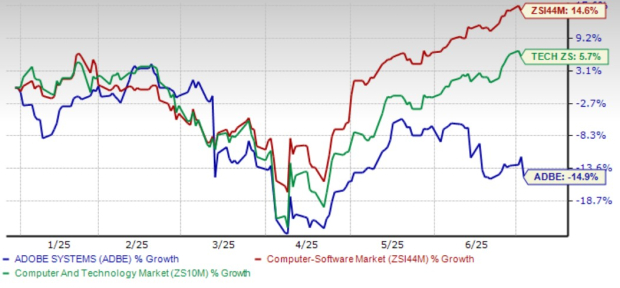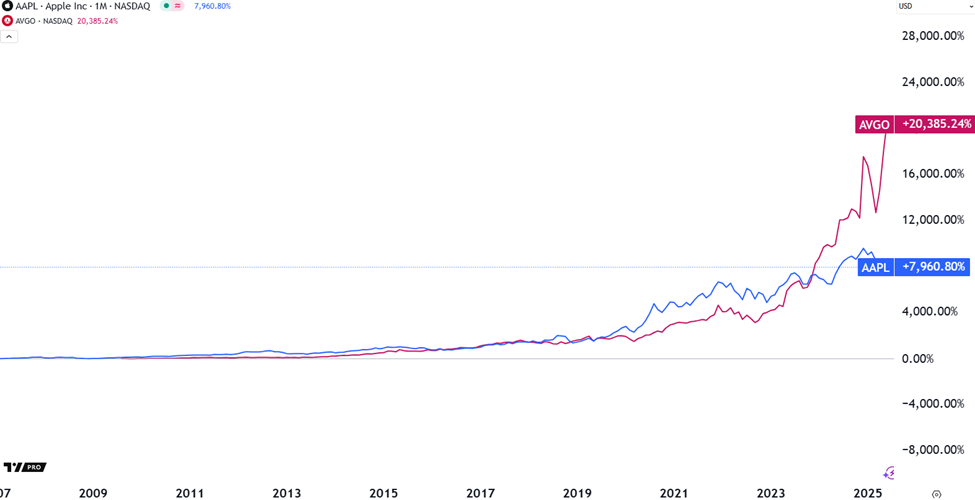They say imitation is “the sincerest form of flattery that mediocrity can pay to greatness,” and that might be playing out between Detroit’s two largest automakers right now. General Motors (NYSE: GM) has seen the success of Ford Motor Company (NYSE: F) in one specific aspect, but can it copy that?
What’s Ford doing?
A decade ago, investors almost viewed an automaker’s fleet and commercial business as dirty work. This segment was seen as a way to sell unwanted cars at marked-down prices to fleets of rental companies and the like, often at little to no margin. But now, if you take a look at the figures, Ford’s commercial business is honestly eye-opening.
Let’s quickly compare Ford’s traditional business, Ford Blue, and its commercial business, Ford Pro. You might think Ford’s traditional business would dwarf its sister business, but that couldn’t be further from the truth.

Image source: Getty Images.
In 2023, Ford Blue generated $7.46 billion in earnings before interest and taxes (EBIT), while Ford Pro generated a similar $7.22 billion. Here’s where it gets more intriguing, though: Ford Blue generated a 7.3% EBIT margin — which is respectable in the mainstream auto business — while Ford Pro generated a much more profitable 12.4% EBIT margin. Let’s also note that in 2023, Ford Pro grew its revenue at a 19% clip compared to Ford Blue’s 8%.
The lesson here is that Ford’s commercial business is extremely valuable and growing quickly. And, to be sure, GM took notice of these results. That’s what brought on its move a little while back.
What’s GM doing?
Almost exactly a year ago, GM launched GM Envolve, “a new era of rapid growth by giving business customers more ways to help reduce their environmental impact, streamline fleet operations and increase driver safety.” Essentially, the change will give GM’s customers access to a single account executive who will simplify the purchasing experience, backed by a team that will create a package of GM’s products, technologies, and solutions for each individual business. Furthermore, GM Envolve will incrementally increase its business by giving business customers access to segments focusing on mobility, energy, delivery, insight, and growth.
What it all means
For decades, the automotive business has been known for being capital intensive and generating low margins, and this surge in commercial business could be the key to unlocking higher margins — as Ford Pro has proven.
GM has already taken the first step, and it’s seeing some success already. In 2023 GM’s fleet sales rose 20%, with deliveries to governments up 28% — the highest level in more than a decade.
Furthermore, GM is pushing its OnStar business to offer technologies and services to its commercial customers. The automaker believes it can bring in $20 billion to $25 billion in annual revenue from software and subscription services by 2030.
If GM can steal a page out of Ford’s playbook here, it’ll be a smart and profitable move, and — looking back at how commercial business was viewed a decade ago — one that investors should really applaud.
Should you invest $1,000 in Ford Motor Company right now?
Before you buy stock in Ford Motor Company, consider this:
The Motley Fool Stock Advisor analyst team just identified what they believe are the 10 best stocks for investors to buy now… and Ford Motor Company wasn’t one of them. The 10 stocks that made the cut could produce monster returns in the coming years.
Consider when Nvidia made this list on April 15, 2005… if you invested $1,000 at the time of our recommendation, you’d have $550,688!*
Stock Advisor provides investors with an easy-to-follow blueprint for success, including guidance on building a portfolio, regular updates from analysts, and two new stock picks each month. The Stock Advisor service has more than quadrupled the return of S&P 500 since 2002*.
See the 10 stocks »
*Stock Advisor returns as of May 6, 2024
Daniel Miller has positions in Ford Motor Company and General Motors. The Motley Fool recommends General Motors and recommends the following options: long January 2025 $25 calls on General Motors. The Motley Fool has a disclosure policy.
The views and opinions expressed herein are the views and opinions of the author and do not necessarily reflect those of Nasdaq, Inc.






